
下载亿题库APP
联系电话:400-660-1360

下载亿题库APP
联系电话:400-660-1360

请谨慎保管和记忆你的密码,以免泄露和丢失

请谨慎保管和记忆你的密码,以免泄露和丢失

为了帮助广大考生顺利通过口译笔译考试,帮考网为大家分享了一些口译笔译相关内容,希望大家每天坚持练习,积极备考。
SECTION 2: STUDY SKILLS (45 minutes)
Directions: In this section, you will read several passages. Each passage is followed by several questions based on its content. You are to choose ONE best answer, (A), (B), (C) or(D), to each question. Answer all the questions following each passage on the basis of what is stated orimplied in that passage and write the letter of the answer you have chosen in the corresponding space in your ANSWER BOOKLET.
Questions 1—5
The purpose of the American court system is to protect the rights of the people. According to American law, if someone is accused of a crime, he orshe is considered innocent until the court proves that the person is guilty. In other words, it is the responsibility of the court to prove that a person is guilty. It is not the responsibility of the person to prove that he orshe is innocent.
In orcerto arrest a person, the police have to be reasonably sure that a crime has been committed. The police must give the suspect the reasons why they are arresting him and tell him his rights under the law. Then the police take the suspect to the police station to “book” him. “Booking means that the name of the person and the charges against him are formally listed at the police station.
The next step is forthe suspect to go before a judge. The judge decides whether the suspect should be kept in jail or released. If the suspect has no previous criminal record and the judge feels that he will return to court rather than run away—forexample, because he owns a house and has a family—he can go free. Otherwise, the suspect must put up bail. At this time, too, the judge will appoint a court layer to defend the suspect if he can’t afford one.
The suspect returns to court a week ortwo later. A lawyer from the district attorney’s office presents a case against the suspect. This is called a hearing. The attorney may present evidence as well as witnesses. The judge at the hearing then decides whether there is enough reason to hold a trial. If the judge decides that there is sufficient evidence to call fora trial, he orshe sets a date forthe suspect to appear in court to formally plead guilty ornot guilty.
At the trial, a jury of 12 people listens to the evidence from both attorneys and hears the testimony of the witnesses. Then the jury goes into a private room to consider the evidence and decide whether the defendant is guilty of the crime. If the jury decides that the defendant is innocent, he goes free. However, if he is convicted, the judge sets a date for the defendant to appear in court again forsentencing. At this time, the judge tells the convicted person what his punishment will be. The judge may sentence him to prison, orcerhim to pay a fine, orplace him on probation.
The American justice system is very complex and sometimes operates slowly. However, every step is designed to protect the rights of the people. These individual rights are the basis, orfoundation, of the American government.
1. What is the main idea of the passage?
(A) The American court system requires that a suspect prove that he orshe is innocent.
(B) The US court system is designed to protect the rights of the people.
(C) Under the American court system, judge decides if a suspect is innocent orguilty.
(D) The US court system is designed to help the police present a case against the suspect.
2. What follows ‘in other words’ (para.1)?
(A) An example of the previous sentence.
(B) A new idea about the court system.
(C) An item of evidence to call fora trial.
(D) A restatement of the previous sentence.
3. According to the passage, ‘he can go free’ (para.3) means _________.
(A) the suspect is free to choose a lawyer to defend him
(B) the suspect does not have to go to trial because the judge has decided he is innocent
(C) the suspect will be informed by mail whether he is innocent ornot
(D) the suspect does not have to wait in jail orpay money until he goes to trial
4. What is the purpose of having the suspect pay bail?
(A) To pay forthe judge and the trial.
(B) To pay fora court lawyer to defend the suspect.
(C) To ensure that the suspect will return to court.
(D) To ensure that the suspect will appear in prison.
5. According to the passage, which of the following statements is true?
(A) The American justice system sometimes operates slowly.
(B) The police can arrest a suspect without giving any reasons.
(C) It is the responsibility of the suspect to prove he is innocent.
(D) The jury considers the evidence in the court room.
Questions 6—10
So you’ve got an invention—you and around 39,000 others each year, according to 2002 statistics!
The 64,000-dollar question, if you have come up with a device which you believe to be the answer to the energy crisis oryou’ve invented a lawnmower which cuts grass with a jet of water (not so daft, someone has invented one), is how to ensure you’re the one to reap the rewards of your ingenuity. How will all you garden shed boffins out there keep others from capitalizing on your ideas and lining their pockets at your expense?
One of the first steps to protect your interest is to patent your invention. That can keep it out of the grasp of the pirates forat least the next 20 years. and forthis reason inventors in their droves beat a constant trail from all over the country to the doors of an anonymous grey-fronted building just behind London’s Holborn to try and patent their devices.
The building houses the Patent Office. It’s an ant heap of corridors, offices and filing rooms—a sorting house and storage depot forone of the world’s biggest and most varied collections of technical data. Some ten million patents—English and foreign—are listed there.
File after file, catalogue after catalogue detail the brain-children of inventors down the centuries, from a 1600’s machine gun designed to fire square bullets at infidels and round ones at Christians, to present-day laser, nuclear and computer technology.
The first ‘letters patent’ were granted as long ago as 1449 to a Flemish craftsman by the name of John Utynam. The letters, written in Latin, are still on file at the office. They were granted by King Henry VI and entitled Utynam to ‘import into this country’ his knowledge of making stained glass windows in orcerto install such windows at Eton College.
Present-day patents procedure is a more sophisticated affair than getting a go-ahead note from the monarch. These days the strict procedures governing whether you get a patent foryour revolutionary mouse-trap orsolar-powered back-scratcher have been reduced to a pretty exact science.
From start to finish it will take around two and a half years and cost £165 forthe inventorto gain patent protection for his brainchild. That’s if he’s lucky. By no means all who apply to the Patent Office, which is a branch of the Department of Trade, get a patent.
A key man at the Patent Office is Bernard Partridge, Principal Examiner (Administration), who boils down to one word the vital ingredient any inventorneeds before he can hope to overcome the many hurdles in the complex procedure of obtaining a patent—‘ingenuity’.
6. People take out a patent because they want to __________.
(A) keep their ideas from being stolen
(B) reap the rewards of somebody else’s ingenuity
(C) visit the patent office building
(D) come up with more new devices
7. The phrase ‘the brain-children of inventors’ (para.5) means _________.
(A) the children with high intelligence
(B) the inventions that people come up with
(C) a device that a child believes to be the answer to the energy crisis
(D) a lawnmower that an individual has invented to cut grass
8. What have the 1600’s machine gun and the present-day laser in common?
(A) Both were approved by the monarch.
(B) Both were granted by King Henry VI.
(C) Both were rejected by the Department of Trade.
(D) Both were patented.
9. Why is John Utynam still remembered?
(A) He is the first person to get a patent forhis revolutionary mouse-trap.
(B) He is the first person to be granted an official patent.
(C) He is the first person to be an officer in the Patent Office.
(D) He is the first person to have invented a lawnmower.
10. According to the passage, how would you describe the complex procedure of obtaining a patent foran invention?
(A) It is rather expensive.
(B) It is an impossible task.
(C) It is extremely difficult.
(D) It is very tricky.
看到这里小伙伴们是否有所收获呢?希望帮考网分享的内容能给大家带来帮助,后续也可以多关注帮考网,这里有更多的考试资讯,你想知道的都在这!
 27
27三级笔译和口译考试每年可以考几次?:三级笔译和口译考试每年可以考几次?通常情况下笔译口译考试都是每年两次。上半年一般在1月份报名,5月份考试,下半年一般在7月份报名,11月考试,各省市情况不一,具体情况可上CATTI官网或各省市人事考试网查询。
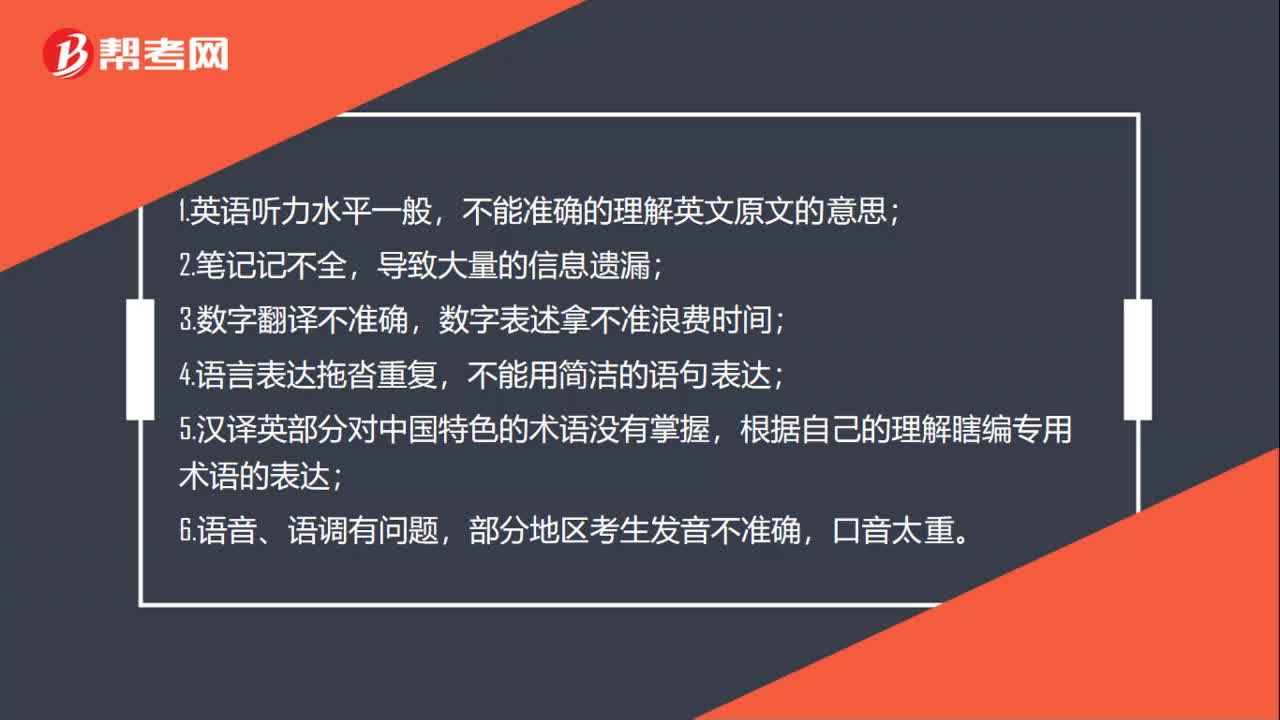 43
43口译考试应注意哪些问题?:口译考试应注意哪些问题?1.英语听力水平一般,不能准确的理解英文原文的意思;2.笔记记不全,导致大量的信息遗漏;3.数字翻译不准确,数字表述拿不准浪费时间;4.语言表达拖沓重复,不能用简洁的语句表达;5.汉译英部分对中国特色的术语没有掌握,根据自己的理解瞎编专用术语的表达;6.语音、语调有问题,部分地区考生发音不准确,口音太重。
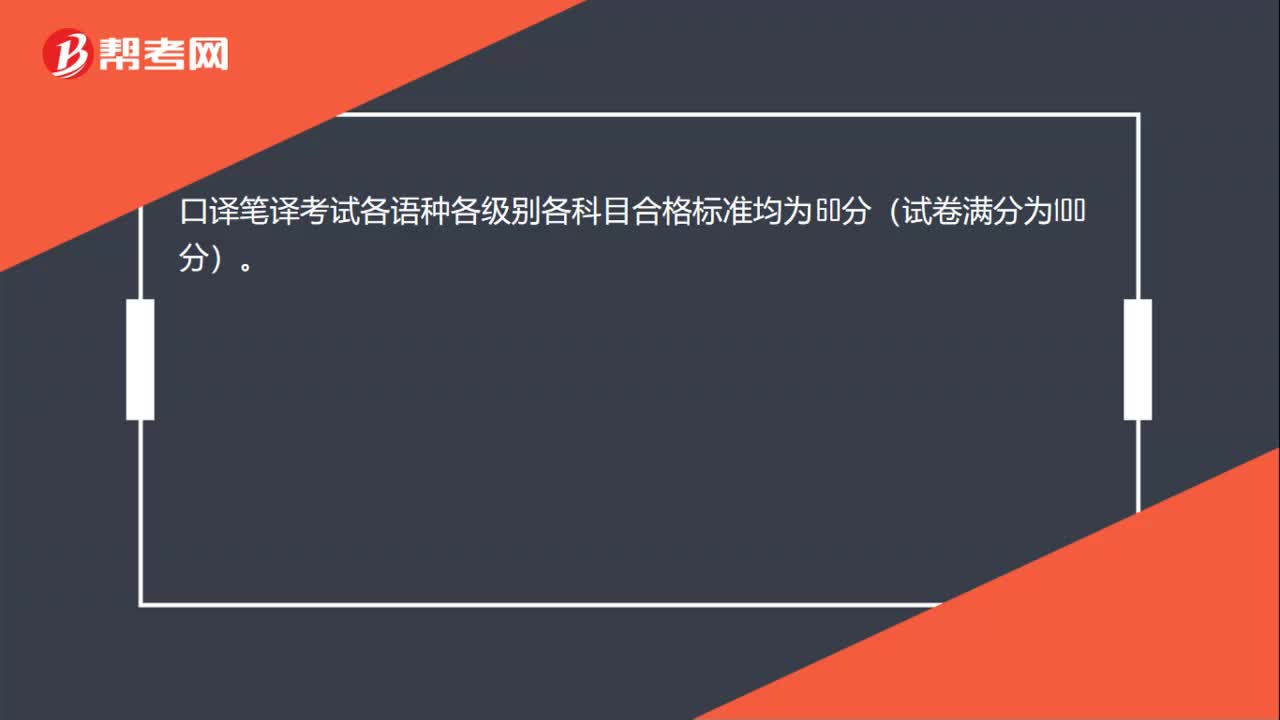 16
16口译笔译考试是多少分及格?:口译笔译考试各语种各级别各科目合格标准均为60分(试卷满分为100分)。
 00:23
00:232020-06-03
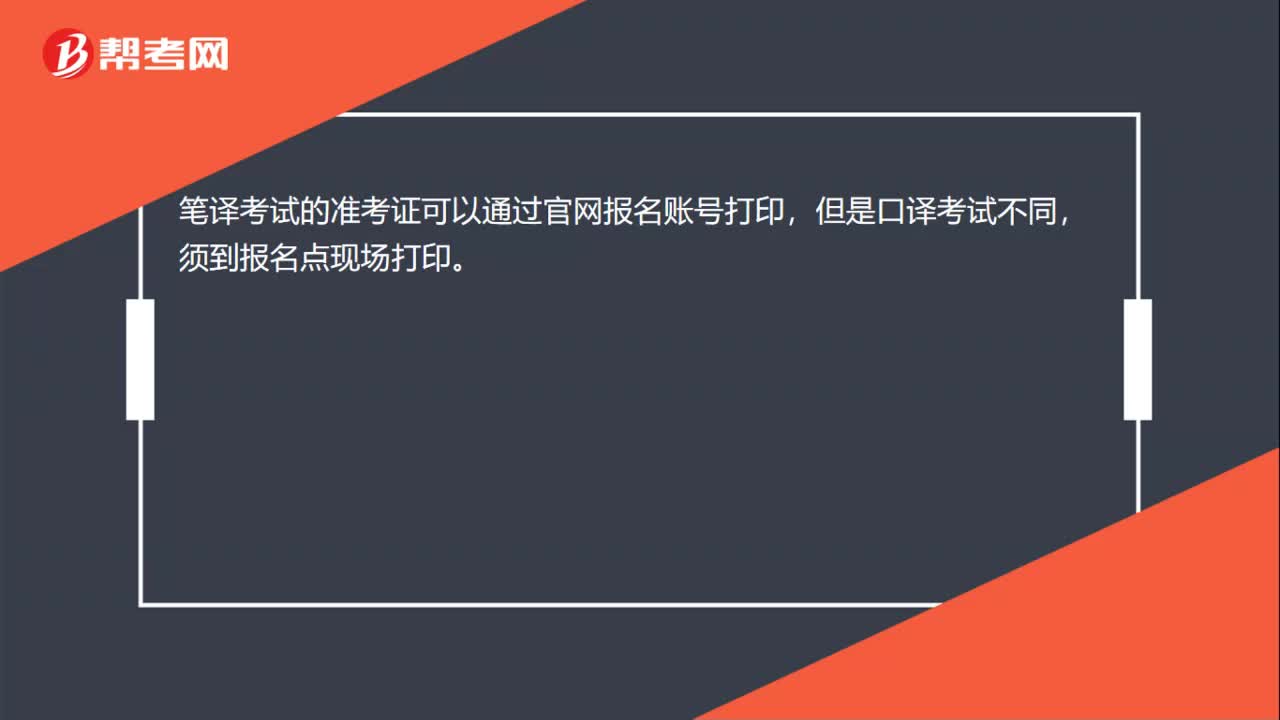 00:15
00:152020-06-03
 00:27
00:272020-06-03
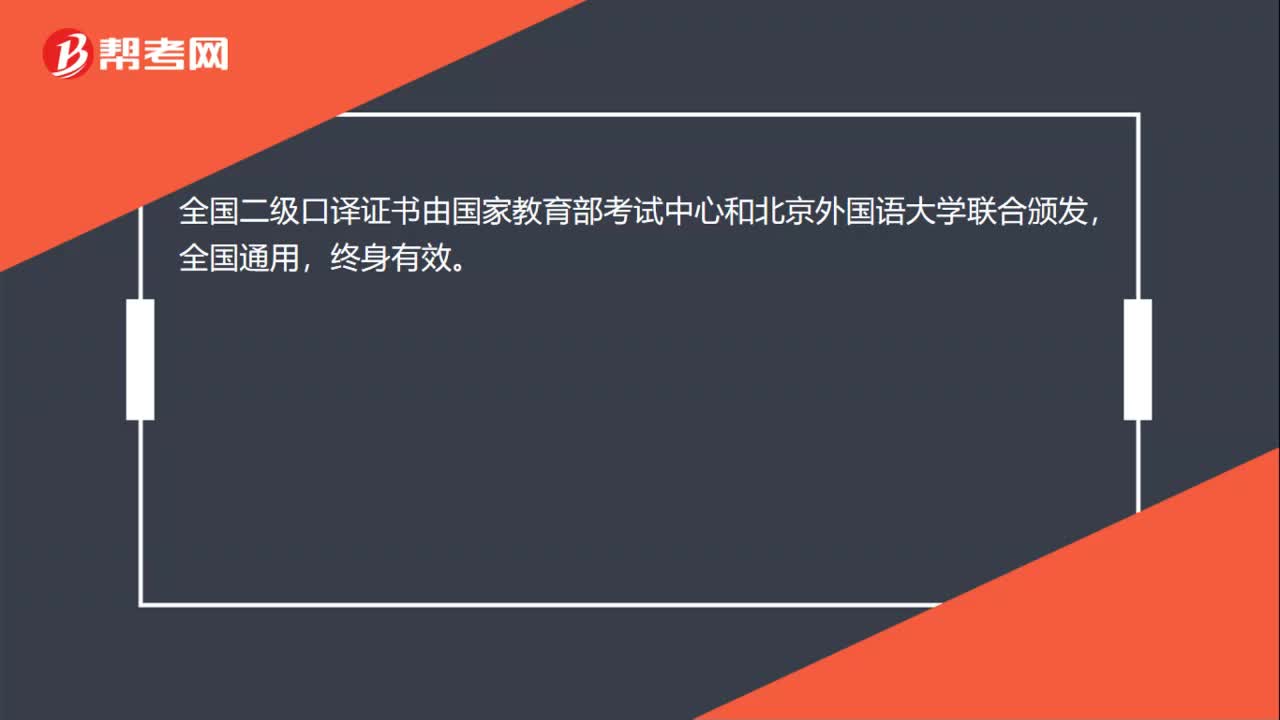 00:17
00:172020-06-03
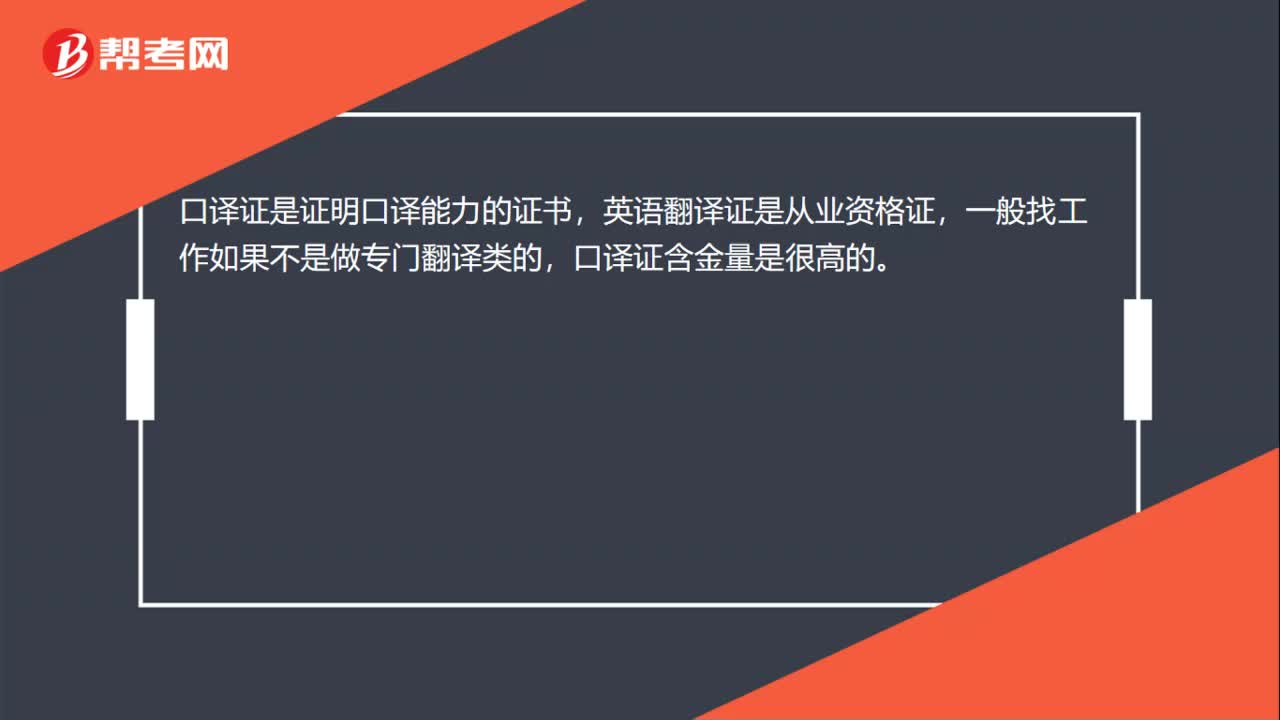 00:17
00:172020-06-03

微信扫码关注公众号
获取更多考试热门资料